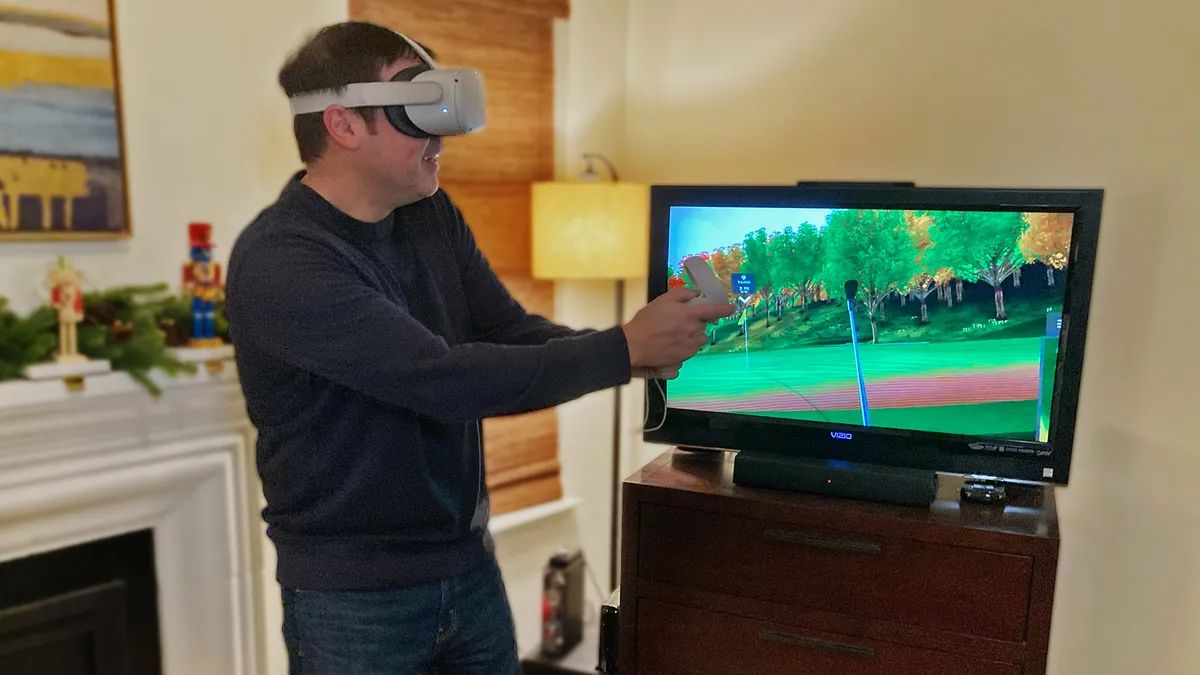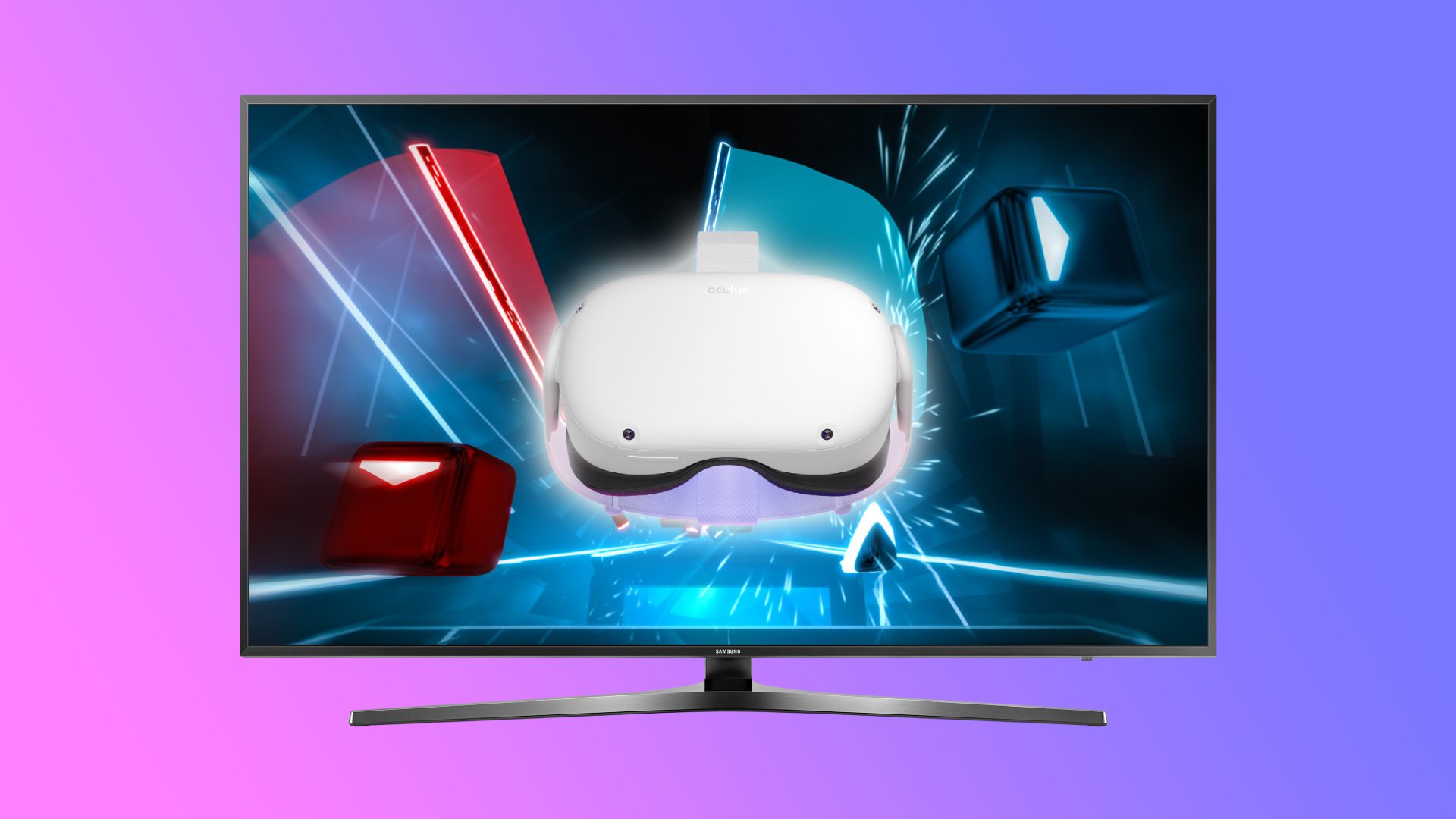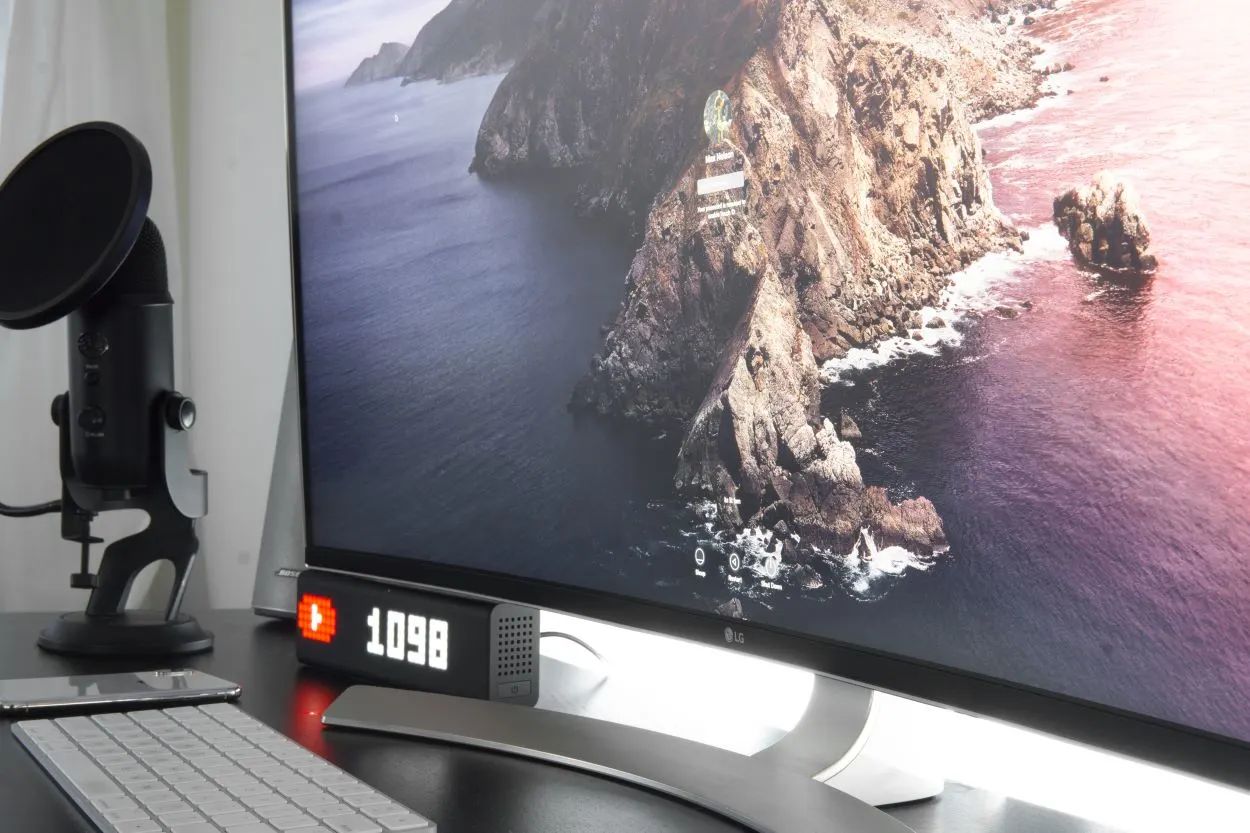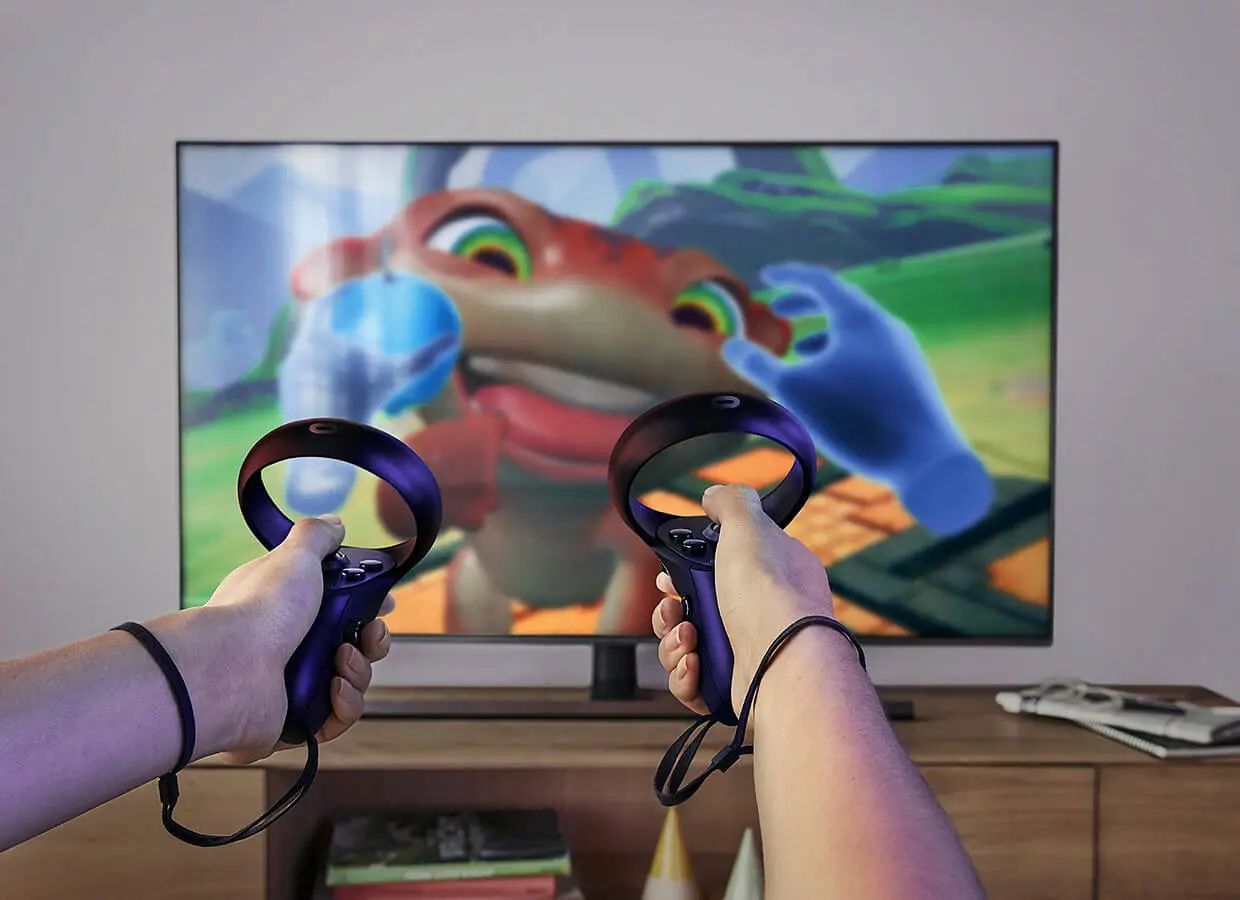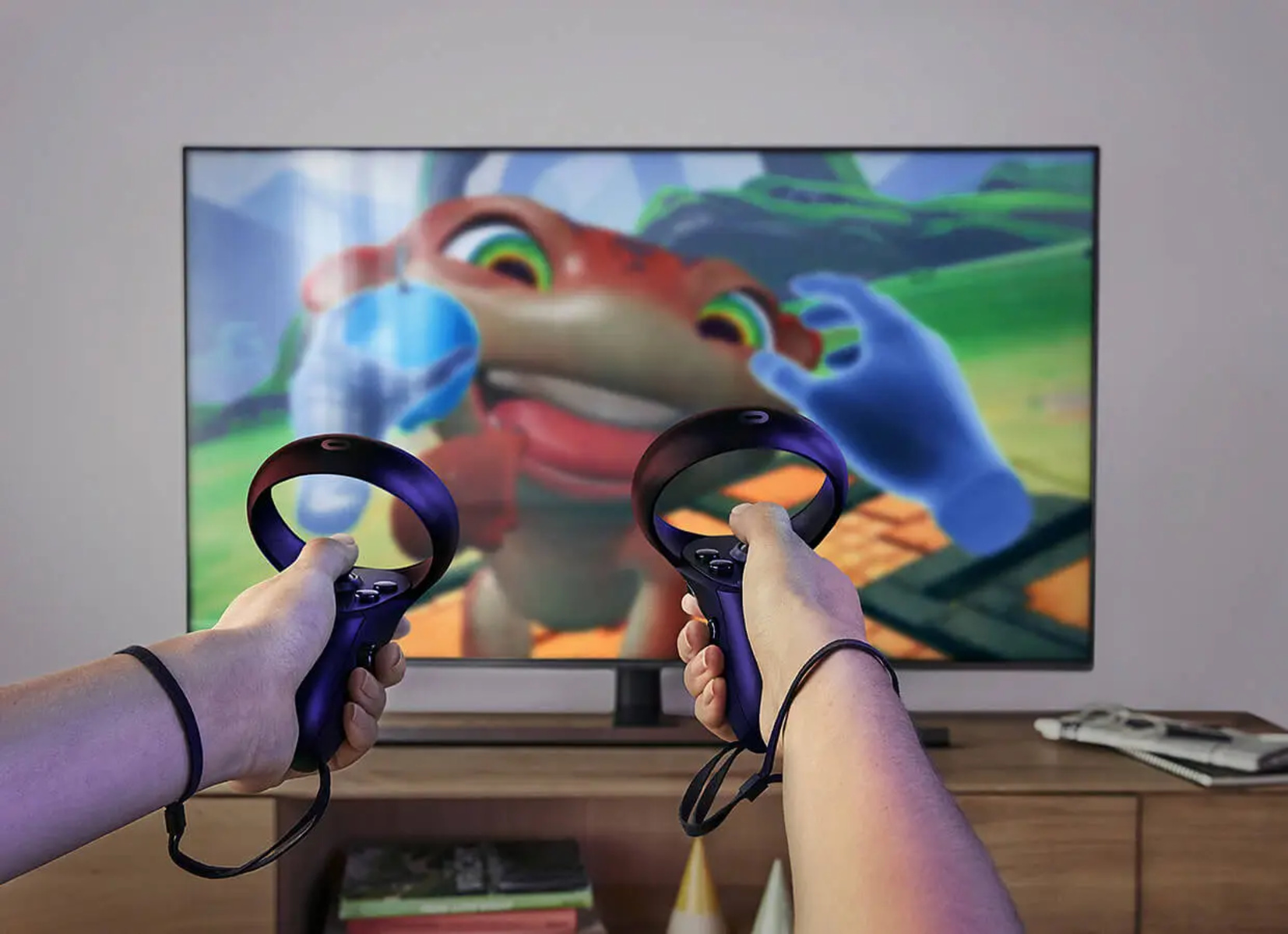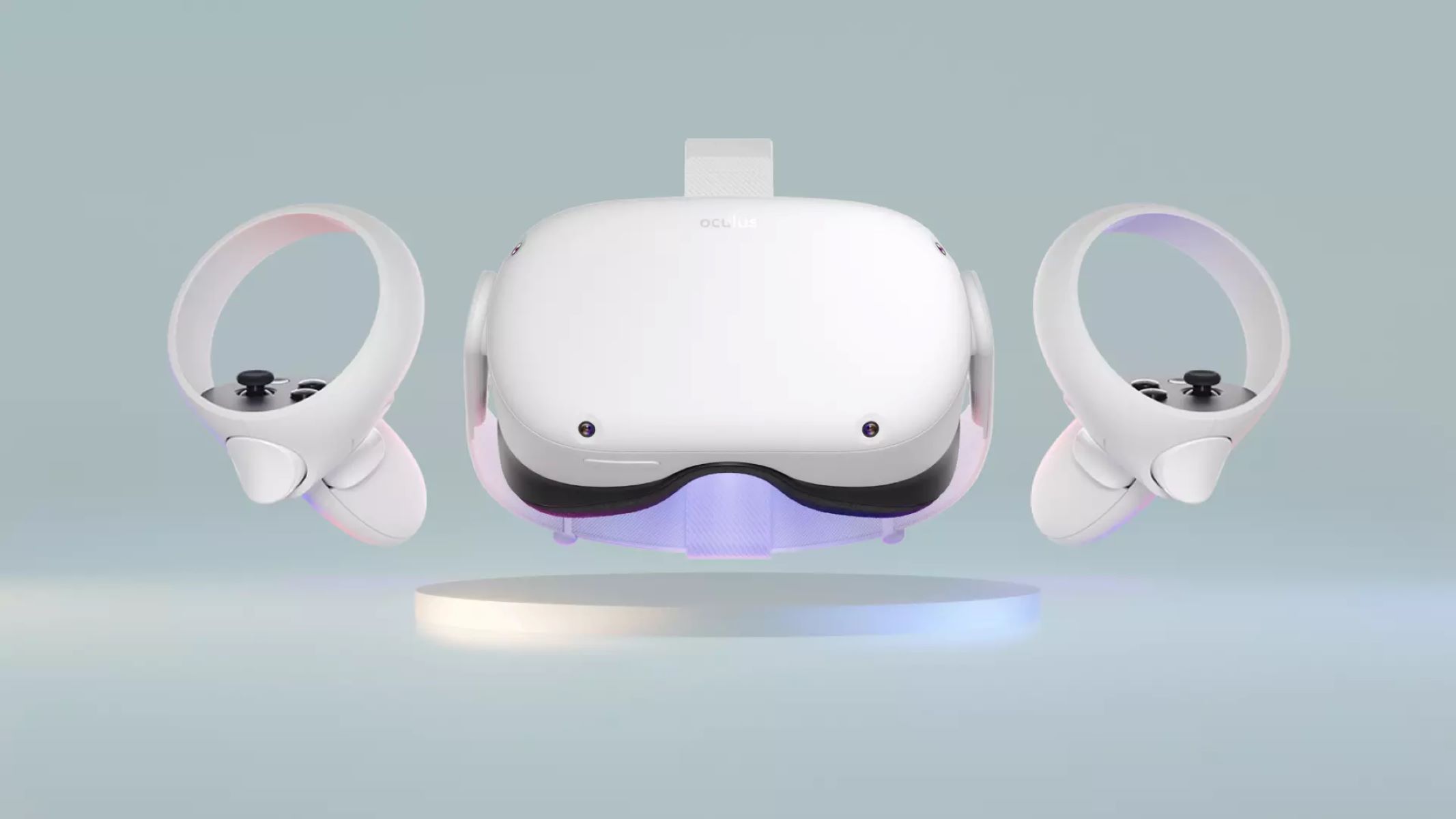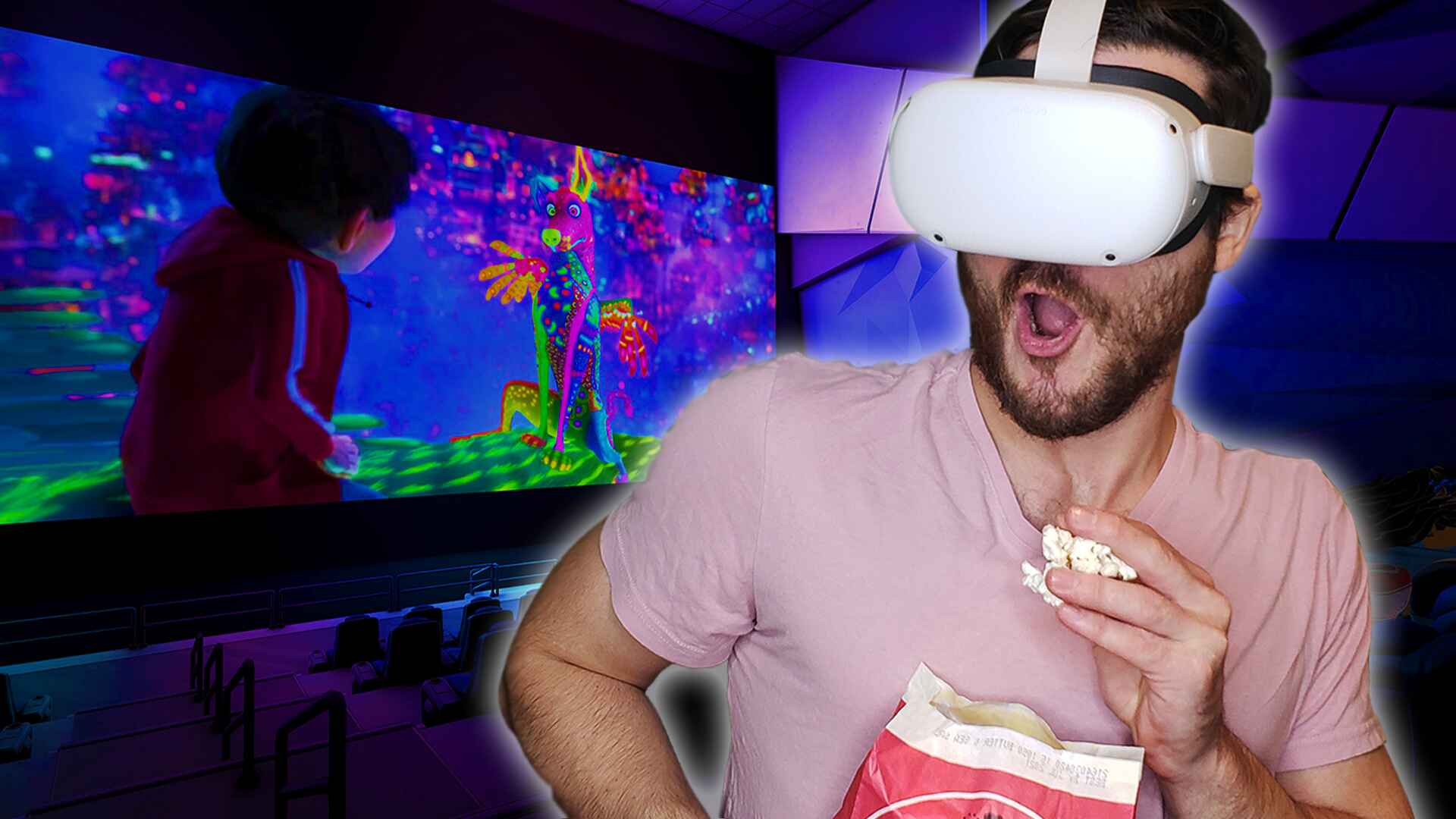Introduction
Welcome to our guide on how to cast Oculus to a smart TV. In today’s technological age, virtual reality (VR) has become increasingly popular, and Oculus is at the forefront of this exciting revolution. Oculus provides users with a fully immersive VR experience, transporting them to virtual worlds and bringing their gaming and entertainment experiences to a whole new level. However, sometimes you may want to share your Oculus experiences with others, and that’s where casting to a smart TV comes in handy.
Before we dive into the step-by-step guide, let’s first understand what Oculus and a smart TV are. Oculus is a virtual reality platform developed by Facebook Technologies. It consists of a VR headset that allows users to interact with virtual environments and games. On the other hand, a smart TV is a television with internet connectivity and built-in streaming capabilities, allowing users to access online content, apps, and services directly on their TV screens.
The ability to cast Oculus to a smart TV opens up new possibilities for sharing your VR experiences with friends and family. Imagine being able to showcase your virtual adventures on the big screen, making it a truly communal experience. Whether you want to play multiplayer games, watch VR films, or simply show off the immersive visuals of your favorite VR apps, casting Oculus to a smart TV brings VR content to a wider audience and enhances the overall viewing experience.
To cast Oculus to a smart TV, you’ll need a few essential components and follow some simple steps for a seamless connection. Don’t worry if you’re not a tech wizard – our detailed guide will walk you through the process, ensuring that you can showcase your Oculus experiences on the big screen without any hassle.
Now that we’ve set the stage, let’s move on to the next section where we’ll delve deeper into the requirements and equipment needed for casting Oculus to a smart TV.
What is Oculus?
Oculus is a leading virtual reality (VR) platform that revolutionizes the way we interact with digital content. Developed by Facebook Technologies, Oculus provides users with a highly immersive and interactive VR experience through its range of VR headsets. These devices allow users to step into virtual environments, where they can explore new worlds, play games, watch movies, and even connect with other users in VR social spaces.
At the core of the Oculus platform is the Oculus VR headset. These headsets are ergonomically designed to provide a comfortable fit and are equipped with high-resolution displays, built-in speakers, and motion-tracking sensors. They offer a wide field of view, creating a sense of presence that makes users feel like they are truly inside the virtual world.
In addition to the hardware, Oculus also provides a robust software ecosystem that includes a library of VR games, apps, and experiences. Users can explore a wide range of content, from action-packed games to immersive storytelling experiences and educational simulations. The Oculus Store serves as the central hub for accessing and downloading these VR experiences, ensuring that users have a diverse and constantly evolving selection of content to enjoy.
One of the standout features of Oculus is its intuitive and immersive user interface. The Oculus Home interface allows users to navigate their VR content library, connect with friends, and personalize their VR environment. The ability to customize your virtual space with interactive elements, decorations, and even virtual pets adds a personal touch to the VR experience.
In recent years, Oculus has also introduced social features that enable users to connect and interact with others in VR. Whether it’s playing multiplayer games with friends, attending virtual events, or simply hanging out in virtual social spaces, Oculus provides a platform for social engagement and shared experiences.
Overall, Oculus has played a pivotal role in bringing VR mainstream. With its cutting-edge technology, expansive content library, and focus on user experience, Oculus continues to push the boundaries of what’s possible in virtual reality. It has paved the way for new forms of entertainment, communication, and creativity, and its impact on the tech industry and beyond is undeniable.
What is a Smart TV?
A smart TV is a television that combines traditional TV functionality with internet connectivity and interactive features. Unlike conventional TVs, which are limited to broadcasting channels via cable or satellite, smart TVs offer a whole new level of entertainment by allowing users to access online content, apps, and services directly on their TV screens.
Smart TVs come equipped with built-in Wi-Fi or Ethernet connectivity, enabling users to connect to the internet and access a wide range of digital content. With a smart TV, you can stream movies and TV shows from popular streaming platforms like Netflix, Hulu, and Amazon Prime Video. You can also browse the web, play games, listen to music, and even interact with social media apps, all from the comfort of your living room.
The user interface of a smart TV is designed to be intuitive and user-friendly, making it easy for anyone to navigate through the various features and apps. Smart TVs often come with a home screen or dashboard that acts as a centralized hub for accessing different apps and services. This allows users to quickly switch between streaming platforms, live TV channels, and other functionalities with just a few clicks of the remote.
Another key feature of smart TVs is the ability to connect external devices and accessories. Most smart TVs have multiple HDMI ports, USB ports, and other input options, allowing you to connect devices like gaming consoles, Blu-ray players, soundbars, and more. This versatility enhances the overall entertainment experience and ensures compatibility with a wide range of devices.
In recent years, smart TVs have become increasingly advanced, with support for high-definition (HD) and even 4K Ultra HD resolutions. This means that you can enjoy stunning visuals and immersive content right from your smart TV, without the need for additional devices or subscriptions.
Smart TVs also often come with built-in voice control and smart assistant integration, allowing users to control their TV using voice commands. This hands-free functionality makes navigation and content searching even more convenient, as you can simply speak into the remote control or microphone to find your favorite shows or apps.
In summary, a smart TV offers a world of entertainment at your fingertips. With its internet connectivity, vast app ecosystem, and advanced features, it transforms the way we watch and interact with TV content. Whether you’re streaming your favorite shows, browsing the web, or enjoying gaming sessions, a smart TV provides a seamless and immersive entertainment experience right in your living room.
Why Cast Oculus to Smart TV?
Casting Oculus to a smart TV offers a multitude of benefits that enhance your VR experience and enable you to share it with others. Here are a few compelling reasons why you might want to cast Oculus to your smart TV:
1. Enhanced Visual Experience: By casting Oculus to a larger screen, such as a smart TV, you can take full advantage of the high-definition display and immersive visuals. The bigger screen size and improved resolution make the virtual world even more captivating and realistic, allowing you to fully immerse yourself and appreciate the details of your VR content.
2. Group Viewing and Social Interaction: Casting Oculus to a smart TV brings VR experiences out of the headset and into the living room, enabling you to share your virtual adventures with friends, family, or guests. Whether you’re playing multiplayer games, showcasing a virtual gallery, or watching VR films, casting Oculus to a smart TV creates a more social and collaborative atmosphere, fostering engagement and interaction among viewers.
3. Showcasing VR Content: If you’re a VR enthusiast or content creator, casting Oculus to a smart TV allows you to showcase your VR creations to a wider audience. Whether it’s demonstrating your virtual reality game design skills or exhibiting a VR art installation, casting Oculus to a smart TV enables you to present your work on a larger scale and convey the full impact of your creative endeavors.
4. Easier Viewing for Spectators: Immersive VR experiences can be solitary by nature, as the visuals and audio are only perceived by the person wearing the VR headset. Casting Oculus to a smart TV allows others to follow along with what the VR user is experiencing, making it more enjoyable for spectators who may not have access to a VR headset or who may not be comfortable wearing one for extended periods of time.
5. Collaborative Activities: Certain VR experiences and games allow for collaboration, where one person wearing the VR headset can interact with others who are not. Casting Oculus to a smart TV enables everyone in the room to participate and contribute to the VR experience, whether it’s by providing guidance, offering suggestions, or simply cheering on the VR user.
In essence, casting Oculus to a smart TV expands the possibilities of VR by transcending the individual headset experience and transforming it into a shared and social event. It allows you to fully appreciate the immersive visuals, engage with others, and showcase your VR content in a way that goes beyond the limitations of the headset. So, grab your Oculus and get ready to cast your VR adventures to the big screen!
Things You Need
Before you can cast your Oculus to a smart TV, there are a few essential components and requirements that you’ll need to ensure a successful connection. Here’s a list of the things you’ll need:
1. Oculus VR Headset: Of course, to cast Oculus to a smart TV, you’ll need an Oculus VR headset. There are different models available, such as the Oculus Quest, Oculus Rift, or Oculus Go. Make sure you have a compatible headset that supports casting to a smart TV. Consult the manufacturer’s specifications to confirm compatibility.
2. Smart TV: Naturally, you’ll need a smart TV with internet connectivity and casting capabilities. Ensure that your smart TV supports casting, either through built-in capabilities or by using additional devices, such as a Google Chromecast or Amazon Fire TV Stick. Check the TV’s user manual or visit the manufacturer’s website to confirm compatibility and casting options.
3. Stable Wi-Fi Connection: Both your Oculus headset and smart TV need to be connected to a stable Wi-Fi network. A strong and consistent internet connection is crucial for smooth casting and proper synchronization between devices. Ensure that your Wi-Fi network is robust and capable of handling the bandwidth requirements of casting high-quality VR content.
4. Compatible Casting App: Depending on your smart TV and Oculus headset, you may need to install a compatible casting app or use the built-in casting feature of your devices. Check the manufacturer’s recommendations for the best casting app or method to use. This app will facilitate the connection and allow you to cast your Oculus to the smart TV.
5. Power Source: It’s essential to have a power source for both your Oculus VR headset and smart TV. Ensure that your devices are fully charged or plugged into a power outlet during the casting process. This will prevent any interruptions due to low battery or sudden power loss.
6. Clear Space: For optimal tracking and movement, create a clear space in the room where you’ll be using your Oculus VR headset. Remove any obstacles or hazards to avoid accidents during gameplay or casting. Ensure that both the VR user and spectators have enough room to move and enjoy the experience comfortably.
By having these essential components and fulfilling the requirements listed above, you’ll be well-prepared to cast your Oculus to a smart TV. To ensure a seamless and enjoyable casting experience, read on to the next section, where we’ll provide a step-by-step guide on how to successfully cast your Oculus to a smart TV.
Step-by-Step Guide to Casting Oculus to Smart TV
Casting your Oculus to a smart TV may seem intimidating, but with our step-by-step guide, you’ll be able to do it effortlessly. Follow these instructions to successfully cast your Oculus to a smart TV:
Step 1: Set Up Your Smart TV: Ensure that your smart TV is turned on and connected to the same Wi-Fi network as your Oculus VR headset. If your smart TV supports casting through a specific app, make sure the app is installed and updated on your TV.
Step 2: Put on Your Oculus VR Headset: Wear your Oculus VR headset and navigate to the Oculus Home interface. From there, access the casting settings. The location of the casting settings may vary depending on the Oculus device you are using, so consult your headset’s manual if you’re unsure.
Step 3: Enable Casting: In the casting settings of your Oculus VR headset, select the option to enable casting. The Oculus app or interface should now display the list of available devices for casting, which should include your smart TV. Select your smart TV from the list of devices.
Step 4: Confirm the Casting Connection: Once you’ve selected your smart TV, a code or prompt may appear on your TV screen. You will need to confirm the casting connection on your smart TV by entering the code displayed on the Oculus VR headset. Follow the on-screen instructions to complete the casting connection.
Step 5: Start Casting: Once the casting connection is established, you’re ready to start casting your Oculus to the smart TV. Navigate to the VR experience you want to cast on your Oculus headset and begin the VR content. The content should now be mirrored and displayed on your smart TV screen.
Step 6: Adjust Settings and Enjoy: Depending on your preferences, you can adjust the casting settings on your Oculus headset or smart TV to optimize the viewing experience. You may have options to adjust display resolution, sound output, or other settings. Experiment with these settings until you find the best configuration for your casted Oculus experience.
Step 7: End Casting: When you’re finished casting your Oculus to the smart TV, you can end the casting session. Simply navigate to the casting settings on your Oculus VR headset and select the option to stop casting. The content on your smart TV will return to its normal display.
Congratulations! You have now successfully cast your Oculus content to your smart TV. Sit back, relax, and enjoy the immersive VR experience on the big screen. Whether you’re gaming, watching movies, or exploring virtual worlds, casting your Oculus to a smart TV allows you to share your VR adventures with others and enhance the overall viewing experience.
Conclusion
Casting Oculus to a smart TV unlocks a whole new level of entertainment and sharing possibilities. By following the step-by-step guide outlined in this article, you can seamlessly connect your Oculus VR headset to your smart TV and enjoy an immersive VR experience on the big screen.
We explored the concept of Oculus, a leading virtual reality platform that brings incredible VR experiences to users. We also discussed smart TVs, which provide internet connectivity and interactive features, enabling users to access a wide range of content and services directly on their TV screens.
Casting Oculus to a smart TV offers numerous benefits, including enhanced visuals, group viewing and social interaction, the ability to showcase VR content, and collaborative activities. It expands the possibilities of VR by making the virtual experience more communal and inclusive, allowing you to share your adventures with friends and family.
To successfully cast Oculus to a smart TV, you’ll need essential components such as an Oculus VR headset, a compatible smart TV, a stable Wi-Fi connection, a casting app, and a power source. By ensuring you have all these elements in place, you’re ready to embark on the casting journey.
With the step-by-step guide provided, you can easily configure your smart TV, enable casting on your Oculus VR headset, confirm the casting connection, and start enjoying your VR content on the big screen. Remember to customize the settings according to your preferences for the best viewing experience.
Casting Oculus to a smart TV provides a unique opportunity to share the magic of virtual reality with others, turning it into a collaborative and social experience. So gather your friends, family, or fellow VR enthusiasts and prepare to be amazed as you transport yourselves to immersive virtual worlds and engage in memorable adventures.
In conclusion, casting Oculus to a smart TV expands the boundaries of VR, making it an inclusive and interactive experience. So, get ready to take your VR experiences to new heights and create lasting memories with the magic of casting Oculus to a smart TV.







